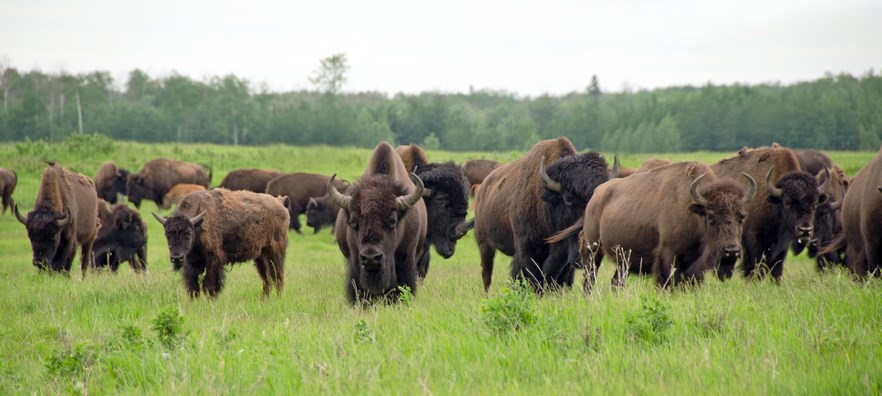It’s a serious problem but all it may need is an old fashioned solution.
The Northern Rockies municipality is lobbying the provincial transportation ministry to install a cattle guard at the Fort Nelson River Bridge on Highway 77, about 70 kilometres northwest of the community.
This, to stop a herd of Nahanni wood bison from crossing over and migrating too far south from their home range near Fort Liard in the Northwest Territories.
“They don’t come down every year but they come down here in enough frequency and create enough of a nuisance that it’s now becoming a bit of a problem, and we need to deal with this before it gets worse,” said mayor Gary Foster in an interview on Friday.
Foster figures the herd may be migrating down the highway while grazing along the side of the road.
“They come right into Highway 77 and here are these fields of forage for them and they think, Well, gee, this is like we landed inside of a supermarket,” he said.
“This just encourages them to come down more and more often," he said, "and just like bears getting habituated to garbage you don’t want that, you don’t want them to know that this is a good place for them to be."
“We want them to be back up in the Liard, in the Nahanni, where they’re supposed to be. You don’t want them to start eating here or they’re going to start coming here all the time," he said.
Foster says the wild bison present concerns for increased human-wildlife conflicts, and disease management if they come into contact with domestic bison herds, or even cattle.
“You don’t want that. It can be bad for the domestic herd, it can be absolutely devastating for the wild herd as well. You need to keep these two herds apart just for their own sake,” Foster said.
“Then there’s the traffic issue,” he added. “Every year, several people hit bison on the road, if not here then up at the Liard hot springs… that’s not a good situation. We need to keep them away from that.”
Foster has alerted transportation minister Rob Fleming to the problem, sending a letter in July suggesting that a cattle guard across the bridge could stop the migration.
“Now, we can’t stop them from swimming the river but I’m hoping that maybe this cattle guard will dissuade them enough that they won’t come into town, they’ll think it’s just too difficult for them," he said.
According to the Northwest Territories government, 28 wood bison were first moved from Elk Island National Park in Alberta in June 1980, and relocated near Nahanni Butte. Another 59 animals were released north of Fort Liard in 1998 among other release efforts over the decades to re-establish bison populations in the north.
There were 960 Nahanni bison counted in 2017, and the NWT government says they can be found throughout the Liard River valley in the Northwest Territories, as well as the lower reaches of the Liard and Beaver rivers in B.C. and the Yukon.
Foster says the wild bison can also cause damage to local farms, knocking over fences and getting into hay fields. He says the roaming herd causing trouble near Fort Nelson was last shooed away a month ago, but had arrived back in time ahead of a radio interview he had scheduled with the CBC about the issue Friday morning.
“They’re an aggressive animal. They’re a wild animal, they’re not domesticated,” he said. “Herding them is not like herding sheep. You try to herd these guys and they’re liable to stand there and take you on. They’re difficult to move as a herd."
Email your letters to [email protected]



